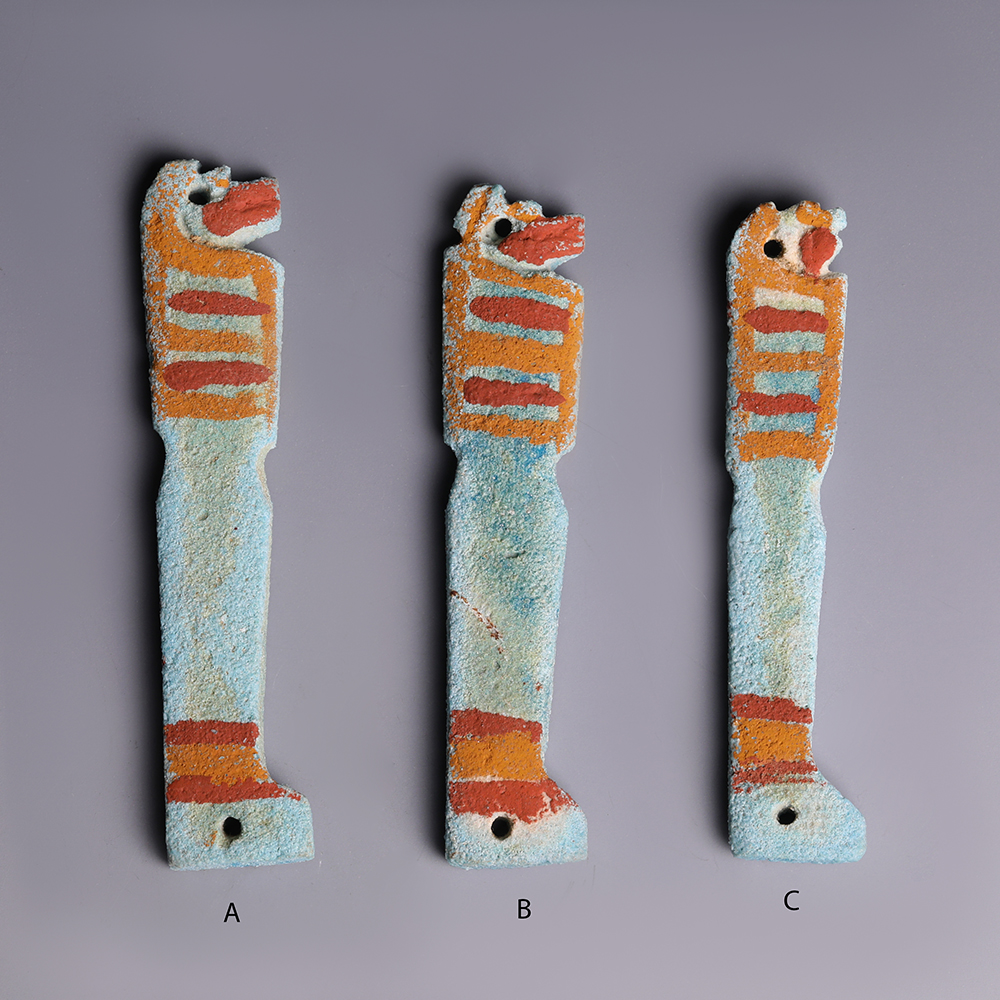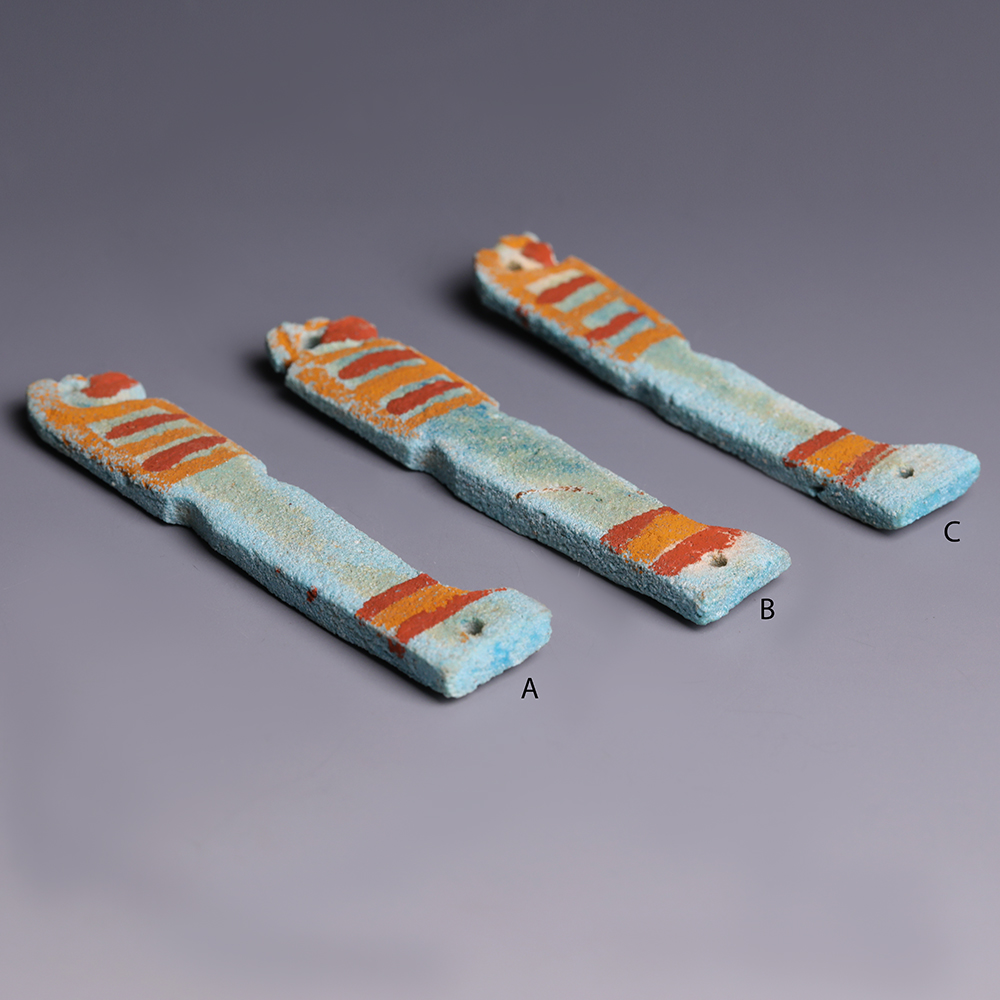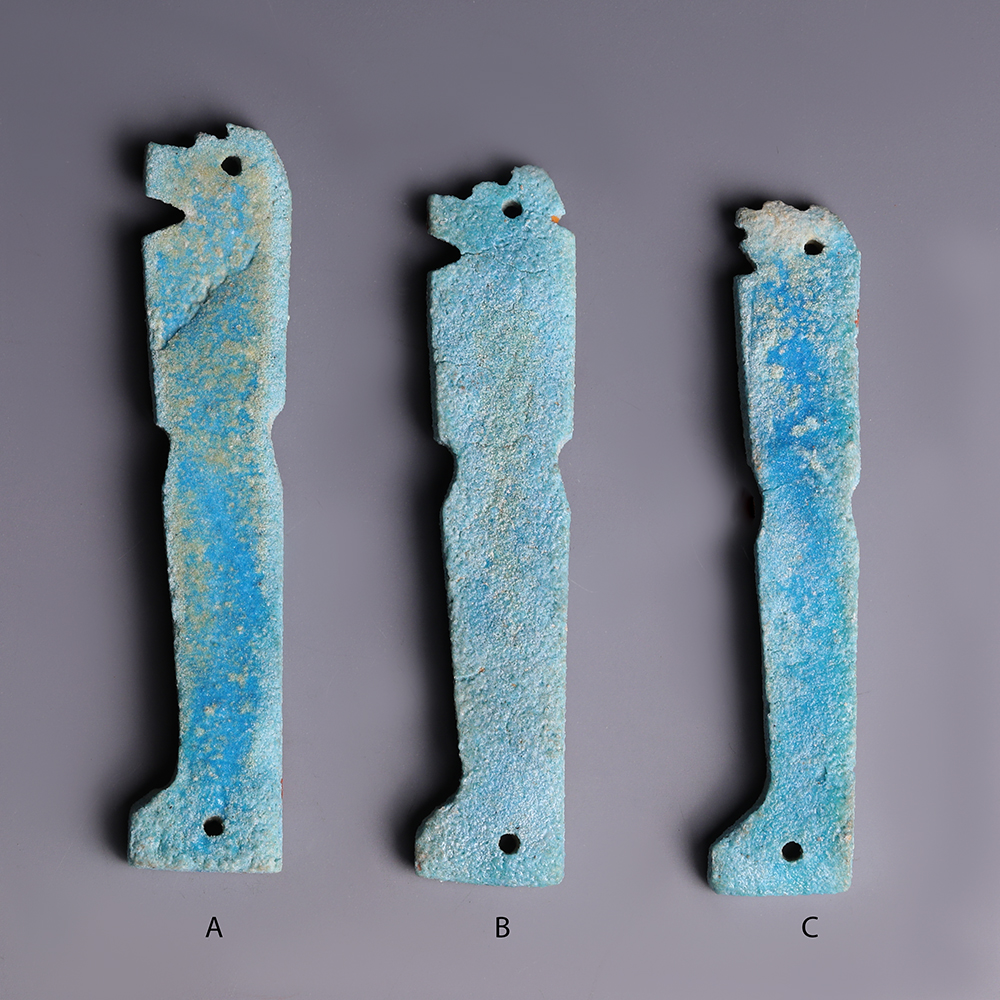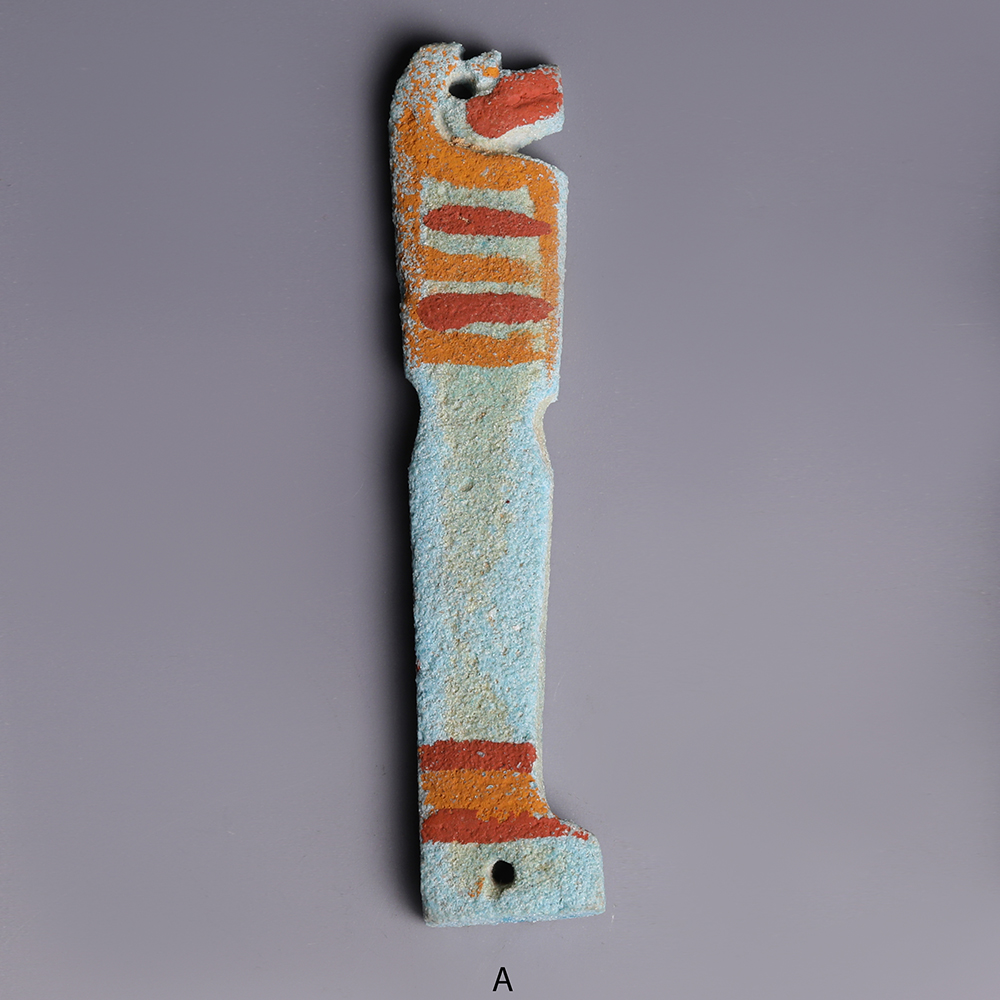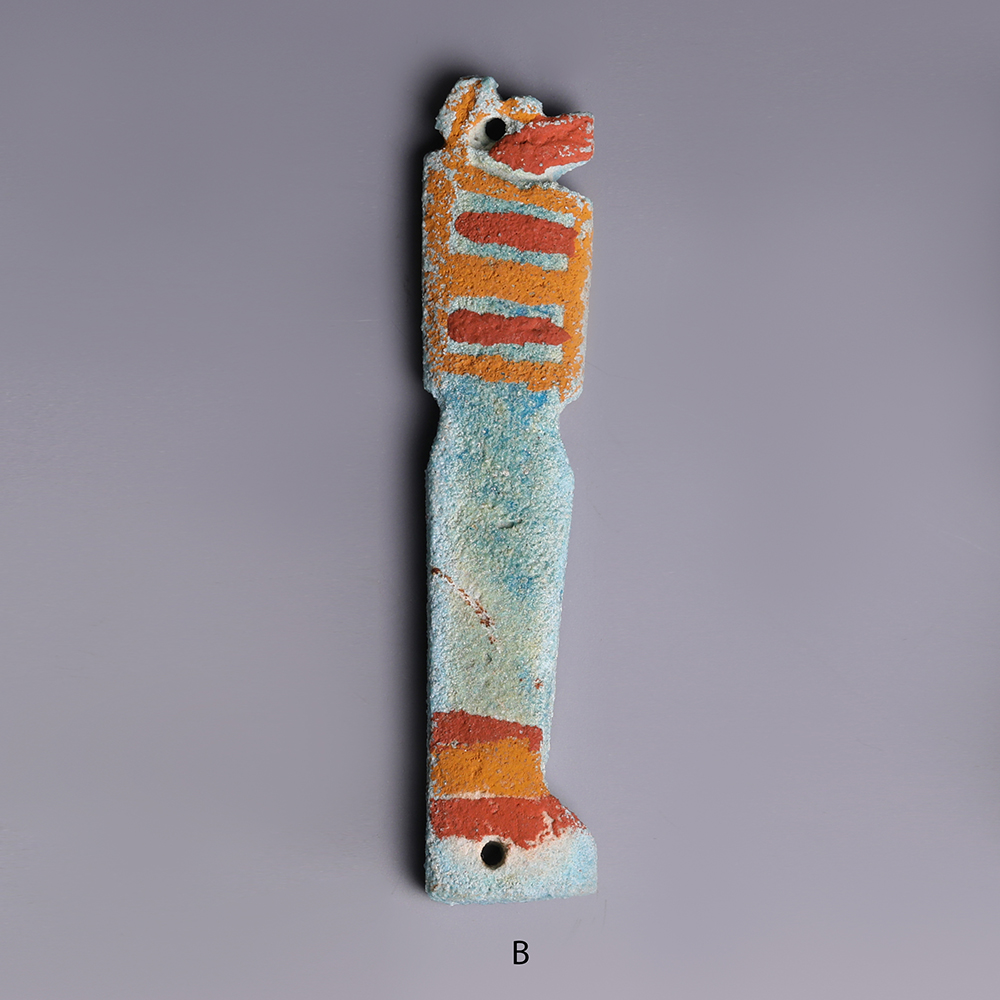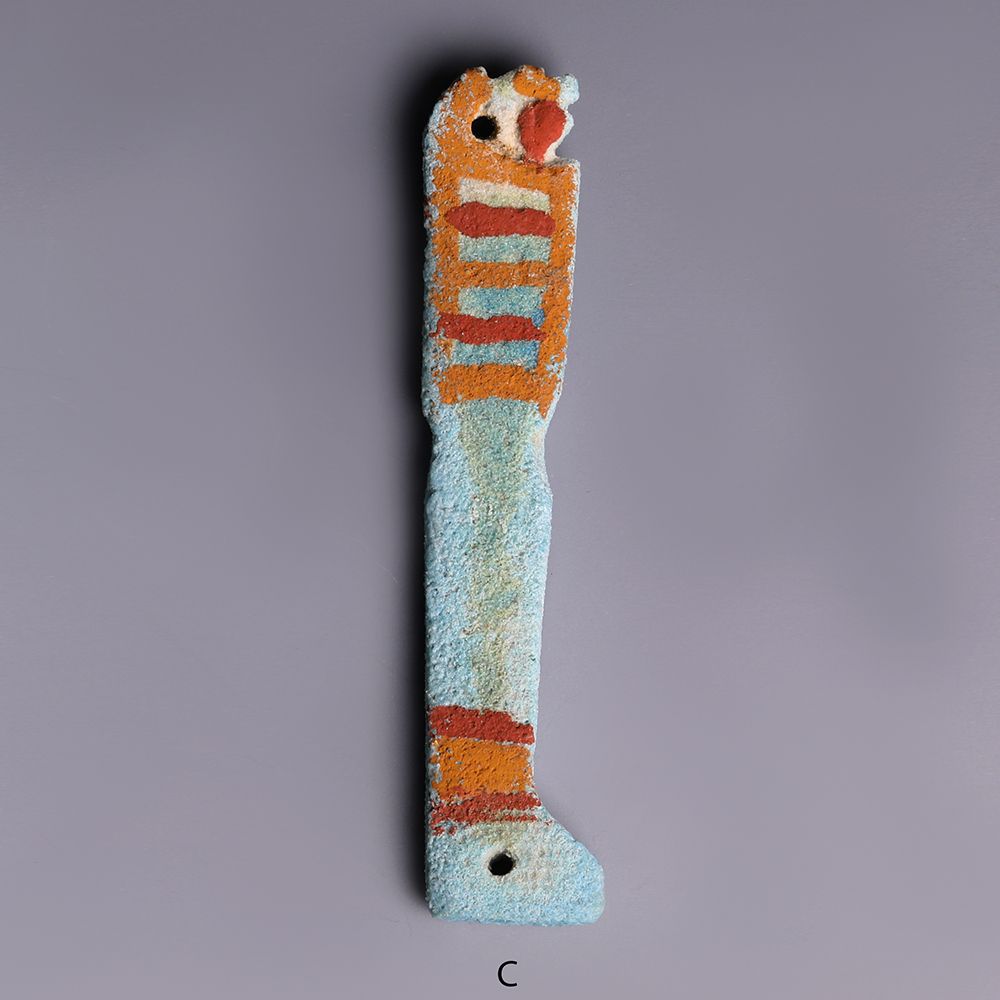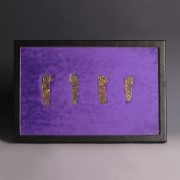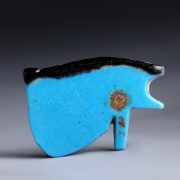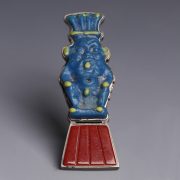The mummy of a deceased featured a large number of amulets, designed to protect and assign apotropaic significance to the body. These particular plaques were popular from the Late Period to the Roman Period and were often attached to sheaths of faience beans. They represent three of the four Sons of Horus. According to mythology, the Four Sons of Horus each were attributed a different organ to protect. For Imsety (our missing figure, represented with a human face), the liver; for Duamutef (represented as a jackal), the stomach; for Hapi (a baboon), the lungs; and for Qebehsenuef (a falcon), the intestines. As the heart was believed to be the resting place of the soul, it was not removed from the deceased. The brain, on the other hand, was thought to be inconsequential, so was scrambled to liquid, removed with metal hooks and then discarded. The four protected organs were removed from the body, embalmed, and then stored in their corresponding jar. These plaques would have worked in much the same way the canonic jars would have; protecting the corresponding organs of the deceased.
To find out more about the use of faience in Ancient Egyptian culture, please see our relevant blog post: What is Egyptian Faience?
